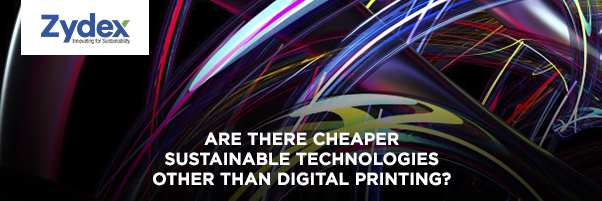Digital fabric printing is a way of printing digital files directly onto fabric using ink jet based printers. It is a process which involves printing of an image, pattern or design directly from the computer onto a pre-treated fabric by an ink-jet printer. The ink-jet printer uses a printable graphical data file and reads the right color information by using a RGB system and then prints the desired color onto the fabric through myriad droplets of ink.
Digital printing brings advantages like lower sampling cost and time, higher resolution and lower wastages and pollution.
However it has some limitations too. The biggest ones are very high fixed, running and maintenance costs leading to high printing cost per meter of fabric. Other limitations include: fixed color gamut, lower depth and brilliancy.
This brings us to a question if is there is any alternative available which can give benefits of both digital and reactive printing?
Epricon is an eco-friendly super soft pigment printing package developed by Zydex for reactive replacement. Epricon allows customers to achieve reactive-like feel, fastness and depth along with excellent brightness. Our simple process eliminates washing and steaming processes and effluent treatment hassles associated with reactive printing. This not only saves overall cost but also results in higher production. Epricon package allows printing at finer meshes which can help achieve digital look prints with deeper shades and brighter colors at much lower costs.
This will offer advantages such as low fabric per meter cost as compared to digital, high production compared to digital and reactive printing, lower wastages and pollution, high brilliancy compared to digital and reactive printing, broader color options and easy color shade matching.
![]()







